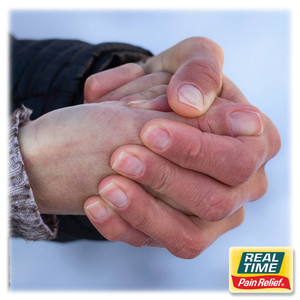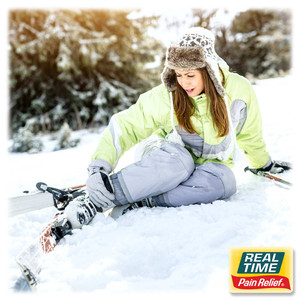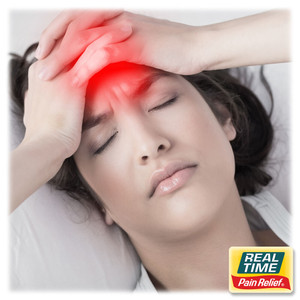Persistent Spinal Pain Syndrome
Posted by Dennis R Escalera on 31st May 2025
Managing Post-Surgical and Chronic Spinal Pain Naturally
What Is Persistent Spinal Pain Syndrome?
Formerly known as “Failed Back Surgery Syndrome” (FBSS), Persistent Spinal Pain Syndrome (PSPS) is a condition where a person continues to experience chronic back or leg pain even after undergoing spine surgery. The updated name, introduced by the International Association for the Study of Pain (IASP), reflects the complex and often multifactorial nature of ongoing spinal pain, regardless of whether surgery was involved.
PSPS is classified into two subtypes:
- Type 1 (without surgery): Pain results from structural or functional spine issues but without a history of spinal surgery.
- Type 2 (with surgery): Pain persists after spinal procedures like discectomy, laminectomy, or spinal fusion.
Causes and Contributing Factors
Persistent spinal pain can stem from a variety of sources, including:
- Scar tissue formation around spinal nerves after surgery
- Incomplete surgical outcomes
- Recurrent disc herniation
- Spinal instability or degeneration
- Nerve damage
- Psychosocial factors such as depression or anxiety
In many cases, it's not a single issue but a combination of physical and neurological changes that contribute to ongoing pain.
Common Symptoms
The symptoms of PSPS can vary but often include:
- Chronic lower back pain
- Leg pain (sciatica-like)
- Tingling, numbness, or burning sensations
- Muscle weakness
- Stiffness or reduced mobility
These symptoms can interfere with sleep, work, and daily activities, making pain management essential for quality of life.
Conventional Treatments
Managing PSPS is challenging due to its complex nature. Treatment strategies may include:
- Medications: NSAIDs, neuropathic pain relievers (e.g., gabapentin), or muscle relaxants
- Physical therapy: To maintain mobility and strengthen supporting muscles
- Epidural steroid injections: To reduce inflammation
- Spinal cord stimulation (SCS): An implantable device that disrupts pain signals
- Psychological therapy: For managing the emotional aspects of chronic pain
However, these treatments may not work for everyone or may come with side effects, which is why many people seek complementary approaches.
The Role of Topical Pain Relief with Nature’s Ingredients
Topical creams and lotions offer a non-invasive, localized option for pain relief that can complement traditional treatments. When formulated with nature's ingredients, these topicals can target inflammation, nerve pain, and muscle tension without systemic side effects.
How Topicals Help:
- Deliver active ingredients directly to the site of pain
- Avoid gastrointestinal or organ-related side effects common in oral medications
- Provide quick-acting relief for surface-level and subdermal issues
Beneficial Nature-Based Ingredients for PSPS Relief
Here are some plant-based and naturally derived ingredients commonly found in high-quality topical pain relief products:
- Arnica Montana: Known for its anti-inflammatory and analgesic properties. It helps reduce swelling and bruising in soft tissue injuries and muscle pain.
- Capsaicin (from chili peppers): Helps desensitize pain receptors over time, particularly effective for nerve-related pain.
- Menthol: Provides a cooling sensation that distracts from deeper pain signals and increases blood flow to the area.
- Comfrey Root Extract: Traditionally used for joint and muscle pain; may help accelerate tissue repair.
- White Willow Bark: Contains salicin, a natural precursor to aspirin, known for reducing inflammation and pain.
- Turmeric (Curcumin): A powerful anti-inflammatory that may help modulate modulate inflammatory pathways involved in chronic pain.
- Boswellia Serrata: Often used in Ayurvedic medicine, it may help reduce inflammation in joints and spinal tissues.
Application Tips for Maximum Benefit
To get the best results from a nature-based topical pain relief product:
- Apply 2–3 times per day consistently
- Massage gently into the affected area to enhance absorption
- Combine with physical therapy or stretching routines when possible
- Look for products that are free from parabens, artificial dyes, and synthetic fragrances
Lifestyle Adjustments That Support Healing
In addition to using topical solutions, those with PSPS can benefit from a holistic approach that includes:
- Low-impact exercise (e.g., swimming, walking, or yoga)
- Mind-body therapies like mindfulness or cognitive behavioral therapy (CBT)
- Heat and cold therapy to manage flare-ups
- Ergonomic improvements at work or home
- Nutritional support with anti-inflammatory foods
When to See a Specialist
While topical creams can offer meaningful relief, they are best used as part of a broader pain management plan. Individuals with worsening neurological symptoms, loss of bladder or bowel control, or severe mobility issues should consult a spine specialist immediately.
Final Thoughts
Persistent Spinal Pain Syndrome can feel like a long, uphill battle—especially when surgery has failed to deliver lasting relief. However, combining conventional treatments with topical solutions made from nature’s ingredients provides a well-rounded, safe, and effective path to pain relief. These natural products support the body’s own healing mechanisms, reduce inflammation, and make daily life more manageable.
In the next article, we’ll explore how nature’s ingredients can also help with Cervical Radiculopathy, a common but often overlooked spinal nerve condition that affects the neck and arms.
References for Persistent Spinal Pain Syndrome Article:
- International Association for the Study of Pain (IASP) –
https://www.iasp-pain.org/publications/pain-research-forum/papers-of-the-week/paper/treatment-modalities-for-patients-with-persistent-spinal-pain-syndrome-type-ii-a-systematic-review-and-network-meta-analysis/ - National Library of Medicine – Persistent Spinal Pain Syndrome: https://pmc.ncbi.nlm.nih.gov/articles/PMC8058770/
- Mayo Clinic – Back Pain:
https://www.mayoclinic.org/diseases-conditions/back-pain/diagnosis-treatment/drc-20369911





